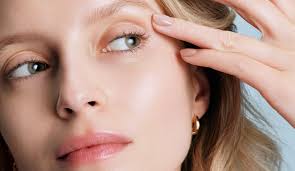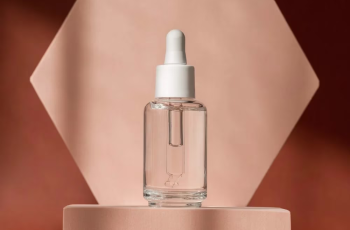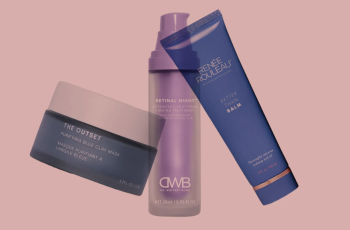
Sun Spots: Understanding Causes, Treatments, and How to Prevent Them
Sun spots—also referred to as age spots, liver spots, or solar lentigines—are among the most common forms of hyperpigmentation that affect aging skin.
These flat, brown to black spots appear primarily on areas of the body frequently exposed to the sun. While typically harmless, they often represent more than just a cosmetic concern.
They are visible reminders of cumulative UV damage that the skin has endured over the years.
For many people, sun spots become a frustrating feature as they age, contributing to an uneven skin tone and premature signs of aging.
Fortunately, there are several effective treatment options available to reduce their appearance.
Moreover, understanding how to prevent sun spots from forming in the first place can significantly improve the long-term health and appearance of your skin.
In this comprehensive guide, we’ll cover what causes sun spots, what they look like, how to treat them, and—most importantly—how to keep them from returning.
What Are Sun Spots?
Sun spots are areas of hyperpigmentation that develop due to repeated exposure to ultraviolet (UV) radiation from the sun or artificial sources like tanning beds.
Unlike freckles, which can fade over time or with reduced sun exposure, sun spots typically persist and may even darken over time without intervention.
These spots are:
Flat and oval in shape
Brown, black, or gray in color
Often grouped together
Found most commonly on the face, hands, shoulders, chest, and arms
They are often referred to as “age spots” because they are more prevalent in older adults. However, sun spots can occur at any age if a person has had significant cumulative sun exposure without proper protection.
What Causes Sun Spots?
The main cause of sun spots is UV exposure. When your skin is exposed to ultraviolet rays—whether from natural sunlight or tanning devices—it reacts by producing more melanin.
This increase in melanin is your skin’s way of defending itself from the harmful effects of UV radiation.
Over time, especially with repeated sunburns or chronic sun exposure, melanin production can become irregular or overactive in certain spots. This leads to the formation of sun spots.
Additional Risk Factors:
Age: Skin becomes less resilient and slower to repair itself with age.
Skin Type: Individuals with fair skin are more likely to develop sun spots due to lower melanin levels and reduced natural protection.
Genetics: A family history of pigmentation issues can increase your risk.
Occupation or Lifestyle: Spending long hours outdoors without sun protection—whether for work or leisure—increases your exposure and likelihood of sun spot development.
What Do Sun Spots Look Like?
Sun spots can vary in size, shape, and intensity. They are generally:
Flat (not raised or textured)
Light to dark brown, black, or gray
From a few millimeters to over a centimeter wide
Clustered or scattered
Painless and non-itchy
Common Locations for Sun Spots:
Face – Particularly on the cheeks, forehead, and nose
Shoulders and upper back – Common in people who wear sleeveless tops or spend time swimming or sunbathing
Backs of hands – A frequent spot due to daily sun exposure while driving or being outdoors
Chest and décolleté – Often overlooked in sun protection routines
It’s important to differentiate sun spots from other types of pigmentation or lesions.
If a spot changes in shape, color, size, or texture, or begins to bleed or itch, seek medical attention to rule outskin cancer.
Other Signs of Sun-Damaged Skin
Sun spots often occur alongside other symptoms of photodamage, including:
Fine lines and wrinkles
Uneven skin tone
Rough or leathery skin texture
Redness or blotchiness
Enlarged pores
Broken capillaries or spider veins
Loss of skin elasticity
These signs indicate not only cosmetic concerns but also damage to the underlying cellular structure of the skin, reinforcing the need for prevention and early treatment.
How to Treat Sun Spots
Fortunately, there are several treatment options—both at-home and professional—that can help lighten or remove sun spots. The right choice depends on the severity, depth, and location of the pigmentation, as well as your skin type and sensitivity.
1. Topical Skin-Brightening Ingredients
Several over-the-counter and prescription creams contain active ingredients that can help fade sun spots:
Hydroquinone – A gold-standard skin lightener that inhibits melanin production.
Retinoids (Retinol, Tretinoin) – Increase cell turnover and promote new skin growth.
Vitamin C (Ascorbic Acid) – A powerful antioxidant that brightens and evens tone.
Niacinamide (Vitamin B3) – Reduces the appearance of dark spots while soothing skin.
Azelaic Acid – Treats both acne and pigmentation gently.
Tranexamic Acid – Helps address stubborn pigmentation and is ideal for melasma-prone skin.
These should be used consistently for several weeks to months, and results may vary depending on your skin type and condition.
2. Chemical Peels
Chemical peels use acids such as glycolic, lactic, or salicylic acid to exfoliate the top layer of the skin.
This process removes the pigmented outer layers and stimulates the regeneration of fresh, evenly pigmented skin.
Deeper peels are available through dermatologists for more significant results but may require downtime.
3. Laser Treatments
Lasers such as IPL (Intense Pulsed Light), fractional lasers, or Q-switched lasers target melanin and break it up, allowing the body to absorb and eliminate the pigment.
Laser treatments offer dramatic results but should only be performed by qualified professionals, especially for darker skin types, which can be more prone to side effects like post-inflammatory hyperpigmentation.
4. Microdermabrasion and Dermabrasion
These mechanical exfoliation techniques help remove the uppermost layers of the skin, reducing the appearance of sun spots and improving skin texture.
Results can be subtle but effective over time when combined with other treatments.
5. Cryotherapy
A lesser-used but sometimes effective option, cryotherapy involves applying liquid nitrogen to freeze and destroy pigmented skin cells.
It’s most suitable for small, isolated spots and may not be ideal for larger areas or sensitive skin.
How Long Does It Take to See Results?
Most topical treatments require consistent use for 8–12 weeks before significant fading is noticed.
Professional treatments like laser or peels may show results after a few sessions, but maintenance is key to preventing recurrence.
How to Prevent Sun Spots
Prevention is always more effective—and less expensive—than treatment. Here’s how to protect your skin and minimize your risk of developing new sun spots:
1. Daily Sunscreen
The most critical step is applying a broad-spectrum SPF 30 or higher sunscreen every single day, regardless of the weather.
UVA rays, which contribute to aging and pigmentation, can penetrate through clouds and windows.
Reapply every 2 hours if outdoors or after swimming/sweating.
Choose mineral sunscreens (zinc oxide or titanium dioxide) if you have sensitive skin.
Don’t forget the ears, hands, chest, and neck.
2. Protective Clothing
Wearing wide-brimmed hats, UV-protective clothing, and sunglasses adds an extra layer of defense against harmful rays.
3. Avoid Peak Sun Hours
Stay out of the sun between 10 a.m. and 4 p.m. when UV radiation is strongest. If you must be outside, seek shade whenever possible.
4. Avoid Tanning Beds
Artificial UV radiation poses the same risk—if not more—than natural sunlight. Tanning beds significantly increase your risk for both sun spots and skin cancer.
5. Monitor Your Skin
Check your skin regularly for any new or changing spots. While most sun spots are harmless, any change in shape, border, or color could indicate a more serious concern.
Sun Spots vs. Melasma vs. Freckles
It’s important to know that not all dark spots are sun spots.
Sun Spots: Caused by cumulative UV damage; generally larger, persistent.
Melasma: Often hormone-driven; symmetrical and appears on the cheeks, forehead, and upper lip.
Freckles: Genetic, small, often fade with less sun exposure.
Each has a unique treatment approach, so proper identification is essential for choosing the right products or treatments.
Conclusion: Manage and Prevent Sun Spots with Smart Skincare
Sun spots are a visible sign of years of unprotected UV exposure, but they don’t have to be permanent.
With a strategic approach that includes sun protection, targeted treatment products, and possibly in-office procedures, you can significantly fade existing sun spots and prevent new ones from forming.
As with all skin conditions, personalized care based on your skin type is crucial. Consider taking a skin typing quiz or consulting a dermatologist to find the most effective and safe options for you.
Special Offer
As a thank-you for reading, use code STSBlog20 for 20% off any product in our store designed to support skin health and target pigmentation.


